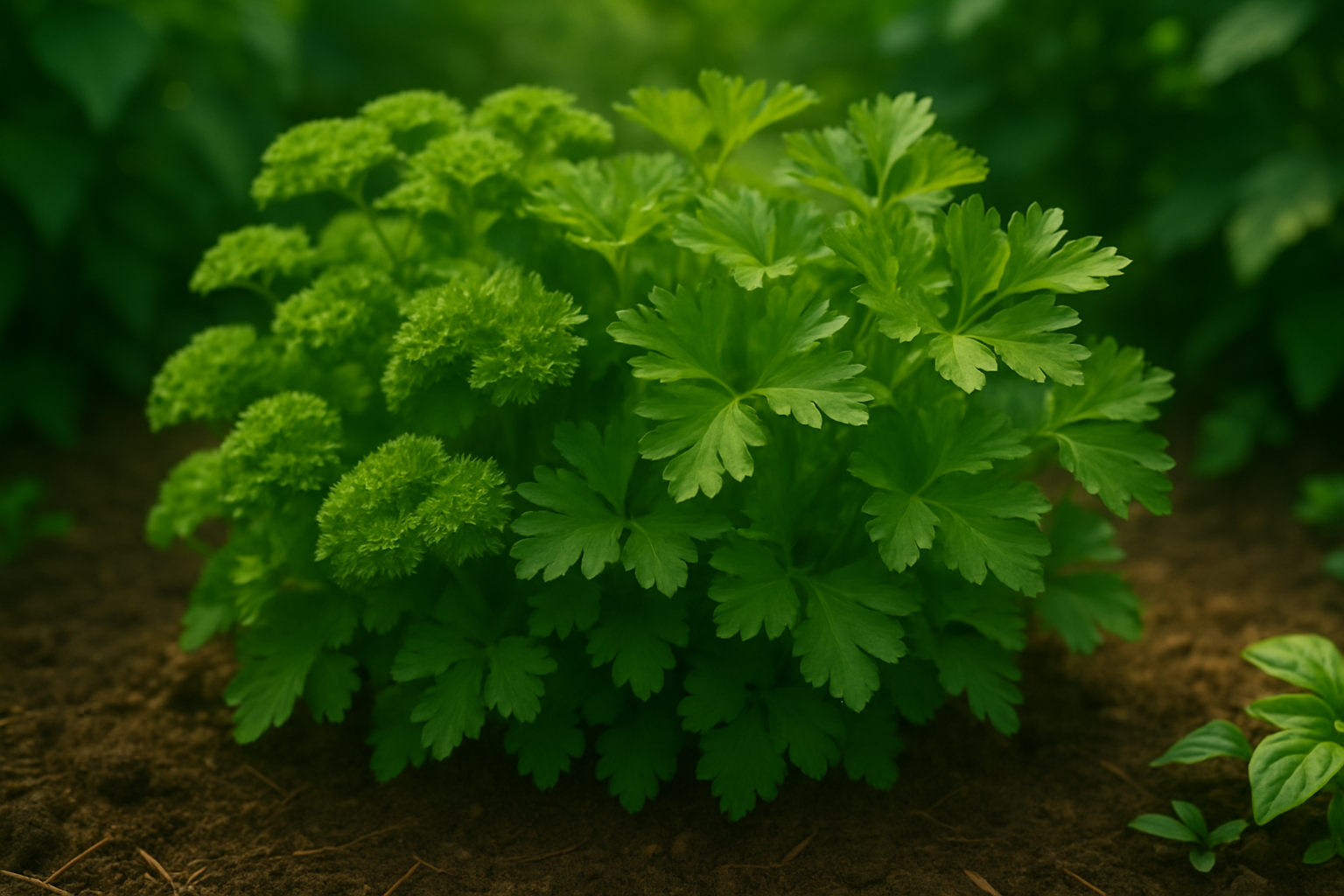Introduction
Parsley is a staple in both home gardens and kitchens worldwide, loved for its fresh flavor and vibrant green leaves. But once you’ve snipped those lush stems for a recipe, you might wonder about parsley regrowth: Does parsley grow back after cutting, and if so, how can you make the most of it?
Whether you’re a seasoned gardener hoping for a continuous harvest or a home cook wanting to keep that windowsill herb thriving, understanding how parsley regrows is key. In this post, we’ll answer the main question about parsley regrowth, explain the plant’s natural growth cycle, and share practical tips to encourage healthy, repeated harvests.
We’ll also discuss the difference between curly and flat-leaf varieties when it comes to regrowing after a cut, and how your cutting technique can impact future yields. Knowing how parsley regrows not only stretches your grocery budget but also ensures you’ll have a steady supply of fresh herbs for your favorite dishes.
If you love using parsley in everything from salads to sauces, this guide will help you grow and harvest it successfully all season long.
Understanding Parsley Growth
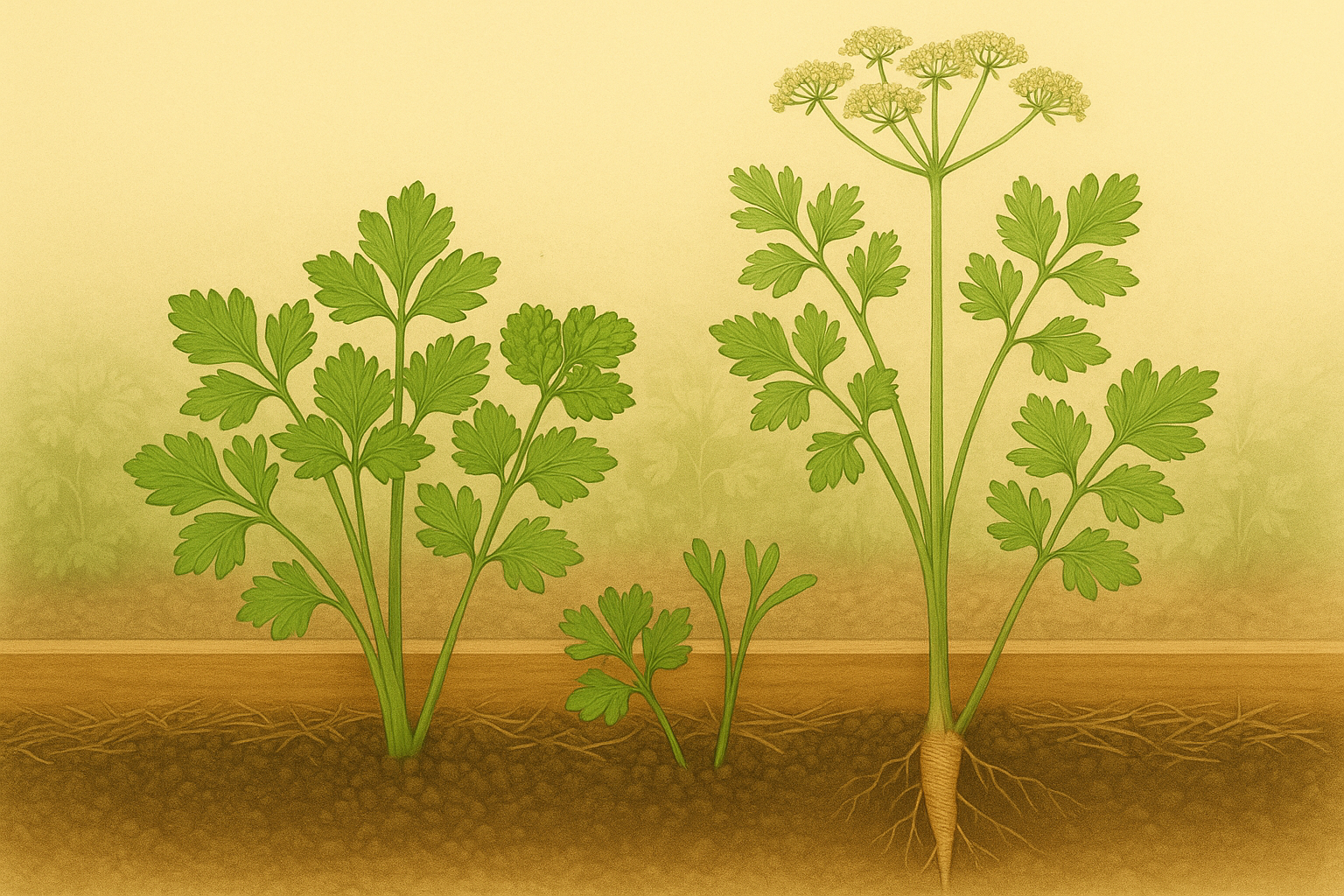
Parsley is a fascinating herb with a unique biennial growth cycle that every gardener should understand for successful harvesting. In its first year, parsley focuses all its energy on growing lush, aromatic foliage—the familiar leaves cooks snip for recipes or garnishes.
If you sow parsley in early spring, expect slow initial growth, but once temperatures rise, parsley fills out with vibrant, green leaves. Most gardeners choose to harvest during this leafy stage since the leaves are the tastiest and most tender.
By the second year, as temperatures warm after winter, parsley shifts its focus toward reproduction. The plant sends up tall stems topped with clusters of tiny yellow-green flowers, attracting pollinators and signaling that its lifecycle is nearing completion. At this stage, leaf production slows, and the flavor of the remaining foliage may turn bitter.
Types of Parsley
It’s helpful to know the difference between types, too:
- Flat-leaf parsley, often called Italian parsley, grows upright with smooth-edged, flavorful leaves. It’s easy to chop and ideal for cooking.
- Curly parsley has tightly ruffled leaves and a bushier shape. It’s often used for ornamental borders and as a crisp garnish, but can also be eaten.
Growth and Harvest Tips
Under the soil, parsley develops a long, slender taproot that helps it draw moisture from deeper layers. New leaves always sprout from the base of the plant, so regularly harvesting outer leaves encourages fresh growth from the center. For a longer bounty, avoid pulling the root—instead, snip leaves at their base.
How and When to Cut Parsley
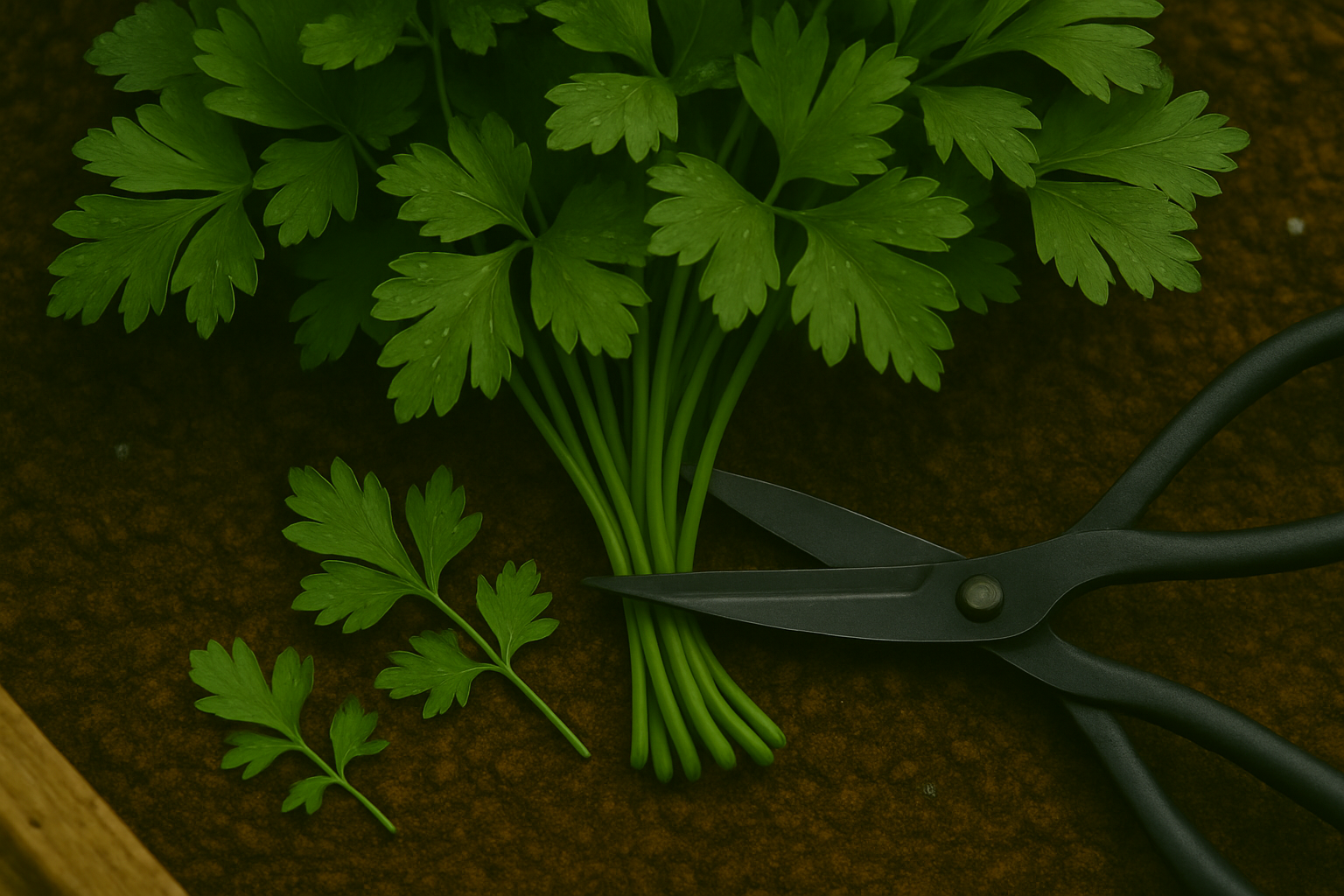
The best time to start harvesting parsley is once the plant has developed a healthy cluster of leaves and reaches about six inches tall, usually around 70 to 90 days after planting seeds. This ensures the herb is mature enough to handle cutting without stress.
Aim to cut parsley in the morning after any dew has dried but before the day heats up—this is when the leaves are most hydrated and flavorful. To harvest, use clean, sharp scissors or kitchen shears for a precise cut, snipping stems at the base near the soil or just above a leaf node. Doing this encourages new shoots to grow from the center, keeping the plant bushy and productive.
Avoid taking more than one-third of the plant at a time; excessive cutting can stunt growth or even kill the parsley. A good rule is to harvest lightly and often—every two to three weeks—removing mature outer stems and leaving the younger inner ones to continue growing. Regular harvesting not only provides a steady supply of fresh parsley but also prevents the plant from bolting (going to seed) too soon.
If you notice yellow, limp, or dying leaves, remove these as well to keep the plant healthy.
By following these simple tips—harvesting at the right time, using sharp tools, and cutting correctly—you’ll enjoy lush, flavorful parsley for months, and you’ll help your plants thrive throughout the growing season.
Does Parsley Actually Regrow After Cutting? (The Science)
Yes, parsley can regrow after cutting, thanks to its unique growth habits rooted in plant biology. Parsley is a biennial herb, which means its life cycle typically spans two years, and its leaves grow from a central crown. When you cut parsley leaves—especially if you trim the outer stems near the base—the plant responds by redirecting energy to dormant leaf buds in the center.
This stimulates the growth of new shoots and fresh leaves, allowing the plant to continue photosynthesizing and thriving. To encourage robust regrowth, harvest parsley regularly but avoid removing more than a third of the plant at once; this ensures plenty of healthy foliage is left to fuel new growth.
Water is crucial, as parsley’s shallow roots dry out quickly, so aim for consistently moist soil, especially during hot weather. Nutrient-rich soil also plays a big role: a balanced fertilizer or some compost worked into the soil can give the plant the boost it needs for vigorous leaf production.
Real-world gardeners find that trimming parsley about once a week, while letting enough leaves remain, leads to the fullest, bushiest plants. Mulching around the base can also help regulate moisture and reduce weed competition, keeping parsley healthy and productive.
Just remember, parsley naturally slows down in the second year as it prepares to flower and set seed, so regrowth may be less vigorous at that stage. With the right care and harvesting techniques, you can enjoy a steady supply of fresh parsley from the same plant for months on end.
Tips for Promoting Healthy Parsley Regrowth
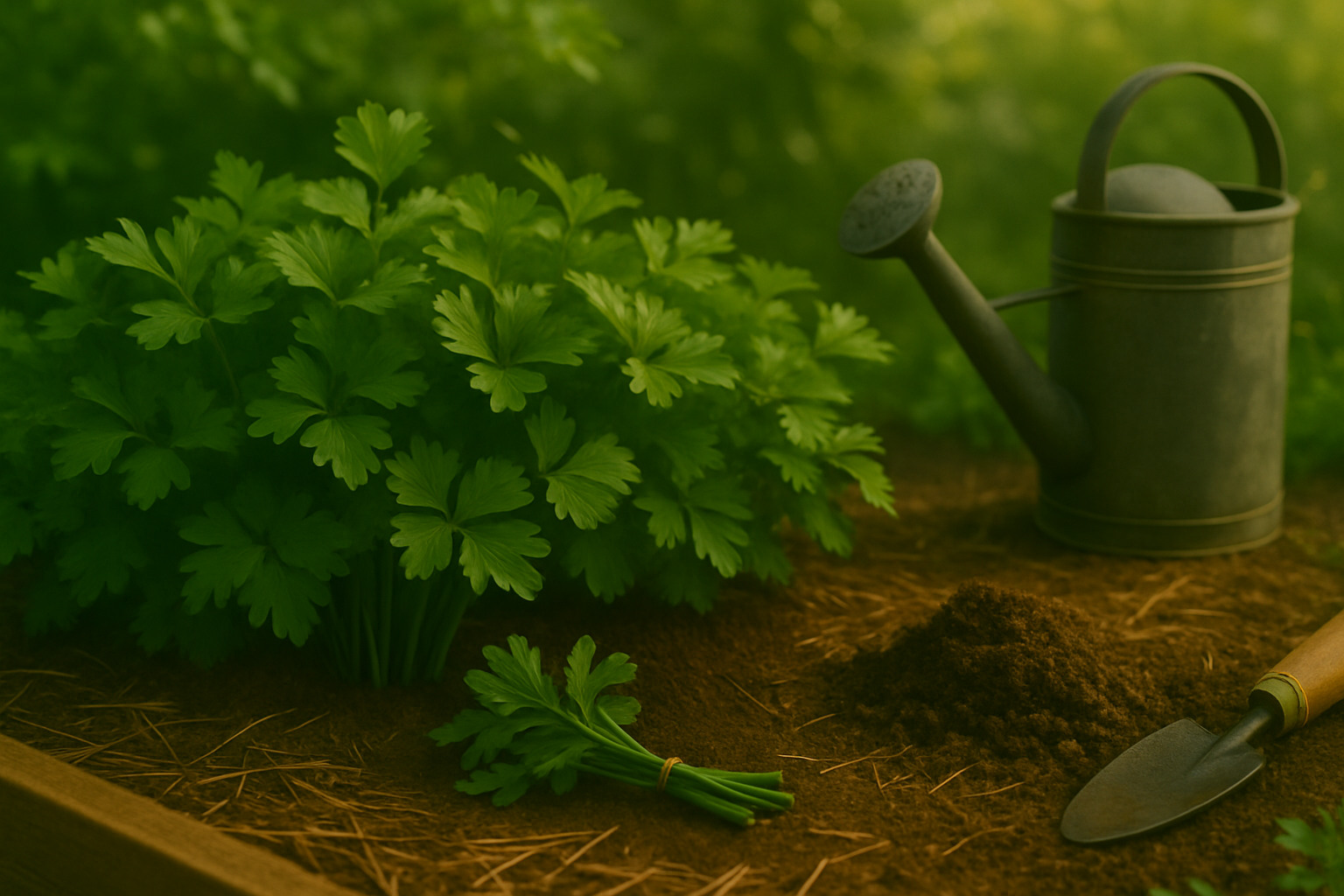
Promoting healthy parsley regrowth starts with a few key habits that are easy to build into your routine.
First, keep the soil consistently moist—parsley doesn’t like soggy roots, but it also doesn’t tolerate long dry spells. Mulch can help retain moisture, especially during hot weather.
Next, give your parsley plenty of sunlight; aim for at least 6 hours of direct light each day, whether your plant is on a sunny windowsill or outside in the garden.
Feeding is also vital: use a balanced liquid fertilizer every 4-6 weeks during the growing season to encourage strong regrowth.
Regularly check your parsley for yellowing or damaged leaves and snip them away—this allows the plant to focus its energy on new, healthy shoots.
Be gentle when harvesting by trimming outer stems first and leaving the center of the plant intact; over-harvesting and cutting too close to the base can stunt regrowth.
Also, avoid letting the soil quality slip—parsley thrives in loose, nutrient-rich dirt, so add compost or a slow-release fertilizer at planting and refresh as needed.
Don’t forget to monitor for pests like aphids, which can weaken new growth.
Common mistakes like using compacted or depleted soil, not watering enough during hot spells, or leaving your parsley in a spot that’s too shady can all drastically slow regrowth.
Always remember, healthy regrowth is about balance: steady moisture, enough light, occasional feeding, and careful harvesting.
By paying attention to these simple details, you’ll enjoy lush parsley sprigs and a thriving, productive plant throughout the season.
Troubleshooting Common Parsley Regrowth Problems
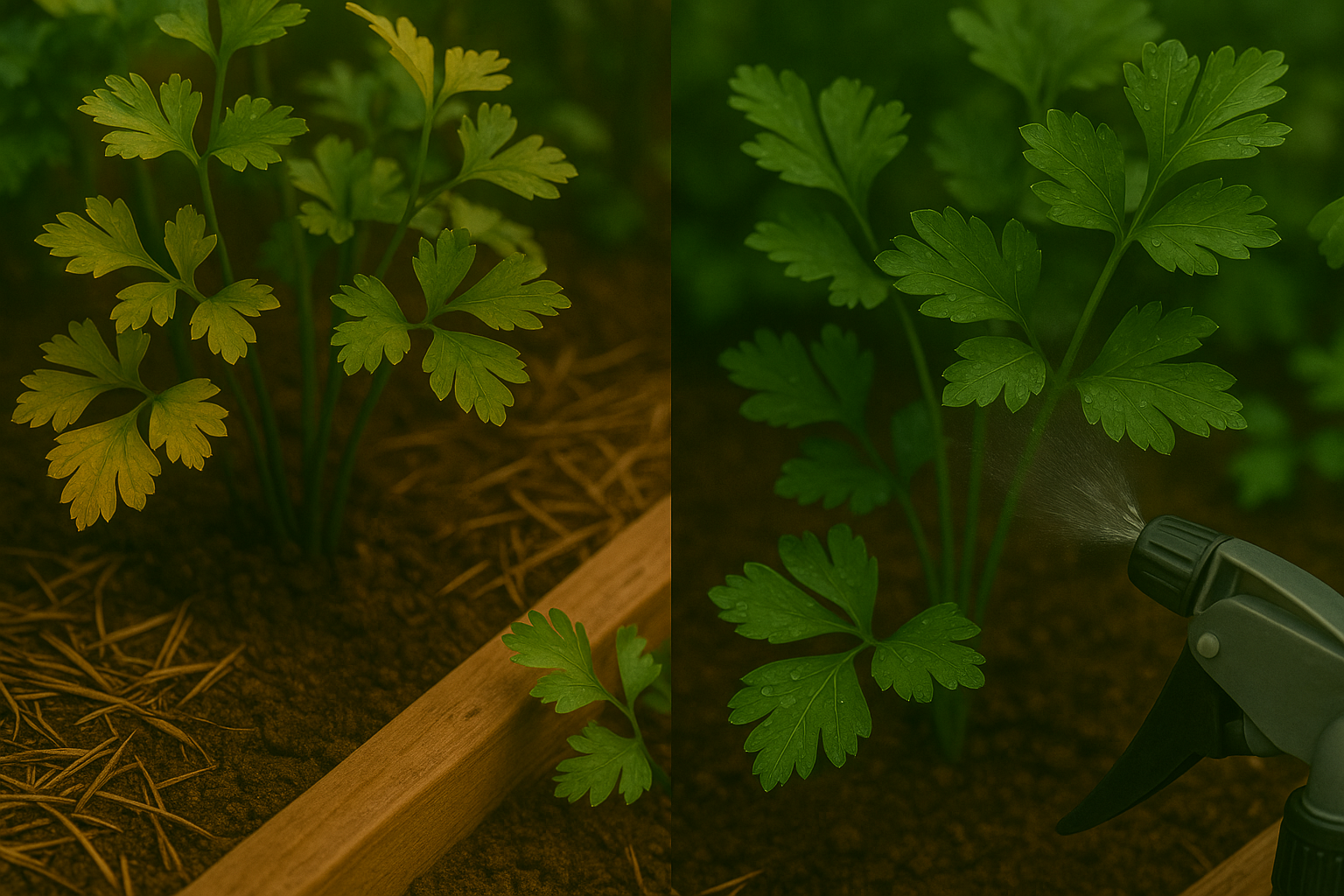
After trimming your parsley, you might notice a few issues that slow regrowth or leave the plant looking less healthy. Here are some common problems and how to fix them:
Yellowing Leaves
Yellow leaves are often caused by overwatering or poor drainage. Make sure your pot or garden bed allows excess water to escape, and let the soil dry out a bit between waterings.
Woody Stems
Woody stems can signal that your parsley is getting old or wasn’t harvested frequently enough. Regular pruning of outer stems encourages fresh, tender growth.
Bolting
If your parsley starts bolting (developing tall stalks and flowers), it’s likely due to hot temperatures or the plant reaching the end of its life cycle. Once bolting starts, the leaves often turn bitter, so it’s usually best to pull up the plant and sow new seeds.
Sparse or Leggy Growth
Sparse or leggy growth usually means your parsley needs more sunlight—aim for at least 6 hours a day—or that it’s suffering from overcrowded roots. Consider dividing and replanting to give your parsley room to thrive.
Pests
Pests like aphids or caterpillars can also stunt regrowth. Inspect the undersides of leaves regularly and remove pests by hand, or use a mild soapy water spray.
When to Start Fresh
If you’ve addressed these problems but your parsley still struggles, it may simply be exhausted. Leafy herbs like parsley only last so long before they lose vigor, so don’t hesitate to start fresh with new plants or seeds—especially after a year or if regrowth stalls.
Conclusion & Quick FAQs
Parsley is a hardy herb that regrows beautifully after cutting, as long as you give it a little attention. Trim the outer stems first and leave the inner leaves untouched so the plant can keep producing new growth. Regular harvesting every two to three weeks is actually beneficial and keeps parsley lush and healthy.
Wondering if parsley survives after it flowers? While it may lose some flavor and stop producing as many leaves, you might still get a few harvests before the plant sets seed. Many gardeners recommend replanting after flowering for the best results.
If you’re unsure about how much to cut, remember it’s safe to remove up to a third of the plant at a time. Don’t hesitate to fill your salads, soups, and garnishes with home-grown parsley—the more you use, the more it grows!
With a little care and consistent snipping, you can enjoy a continuous supply of fresh parsley right from your garden or windowsill. Give regular harvesting a try; you’ll likely be amazed at how quickly your parsley bounces back, ready for your next meal.
